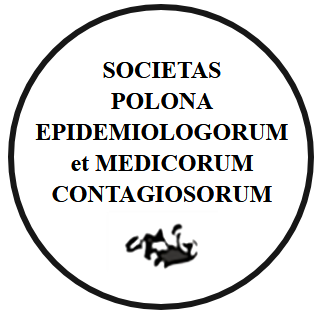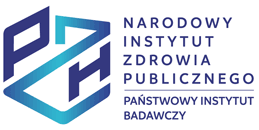ABSTRACT
INTRODUCTION. Rubella is the disease subject to the elimination programme coordinated by the World Health Organization (WHO). Generally, rubella is an infection of mild course among children but in the case of pregnant women, who are not immunized, the probability of the occurrence of severe congenital abnormalities (congenital rubella syndrome) may amount to 95%. The strategy of the countries belonging to the WHO European Region is directed to the interruption of the rubella virus transmission in the environment in order to prevent the cases of congenital rubella syndrome (CRS).
OBJECTIVES. The aims of the present article are to analyze the epidemiological situation of rubella in Poland in 2018 and to discuss the rubella vaccination coverage.
MATERIAL AND METHODS. The epidemiological situation of rubella in Poland was analyzed on the basis of publications: “Infectious diseases and poisonings in Poland in 2018” and “Vaccinations in Poland in 2018”.
RESULTS. In 2018, there was a decrease in the number of rubella cases - with registered 437 cases (in 2017 – 476 cases) - and a decline in incidence (from 1.2 per 100 000 to 1.1). The highest incidence rate, regardless of gender and the environment, was observed among children aged 0-4 years (9.8 per 100,000). In 2018, no cases of congenital rubella syndrome were registered.
SUMMARY AND CONCLUSIONS. In 2018, there was a decrease in the number of rubella cases. In Poland Rubella is reported exclusively on the basis of the clinical picture. The proportion of laboratory tests confirming/excluding rubella infection is still very low in Poland.
STRESZCZENIE
WSTĘP. Różyczka od 2004 r. objęta jest programem eliminacji, koordynowanym przez Światową Organizację Zdrowia (WHO). Eliminacja różyczki w kraju możliwa jest pod warunkiem osiągnięcia min. 95% poziomu zaszczepienia populacji, monitorowania sytuacji epidemiologicznej: rejestrowania wszystkich podejrzeń różyczki oraz prowadzenia diagnostyki laboratoryjnej w Laboratorium Referencyjnym WHO. Funkcję tę pełni Zakład Wirusologii NIZP-PZH.
CEL PRACY. Celem pracy jest ocena sytuacji epidemiologicznej różyczki w Polsce w 2018 r. z włączeniem oceny stanu zaszczepienia przeciw różyczce oraz stopnia realizacji programu eliminacji różyczki WHO w Polsce.
MATERIAŁ I METODY. Ocenę sytuacji epidemiologicznej różyczki w Polsce przeprowadzono na podstawie zagregowanych zgłoszeń podejrzeń zachorowań na różyczkę nadesłanych do NIZP - PZH przez Wojewódzkie Stacje Sanitarno – Epidemiologiczne, danych z biuletynu ,,Choroby zakaźne i zatrucia w Polsce w 2018 roku” oraz ,,Szczepienia ochronne w Polsce w 2018 roku”.
WYNIKI. W 2018 r. zarejestrowano 437 przypadków różyczki, o 39 przypadków mniej niż w 2017 r. (476 przypadków), oraz spadek zapadalności do 1,1 na 100 tys., nieznacznie mniej niż w 2017 r. (1,2 na 100 tys.).
Najwyższą zapadalność, niezależnie od płci i środowiska, odnotowano w grupie wieku 0-4 lata (9,8 na 100 tys.). W 2018 r. nie zanotowano przypadków zespołu różyczki wrodzonej.
PODSUMOWANIE I WNIOSKI. W 2018 r. w Polsce odnotowano spadek liczby zachorowań na różyczkę.
Różyczka pozostaje rejestrowana na podstawie rozpoznań klinicznych, bez wymaganego potwierdzenia laboratoryjnego, co skutkuje zgłaszaniem wielu chorób wysypkowych jako różyczki.
You can change cookies settings in your browser. Restricted use of cookies in the browser configuration may affect some functionalities of the website.





